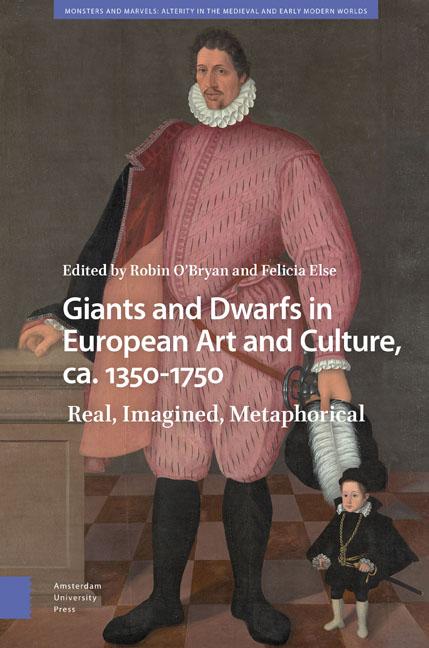9 - Per mano della Maria Nana: A Female Dwarf in the Retinue of Eleonora di Toledo
Published online by Cambridge University Press: 13 April 2024
Summary
Abstract
This chapter considers the role of female dwarfs in noblewomen's entourages by focusing on Maria, a dwarf attendant in the retinue of Eleonora di Toledo (1522–1562) at the Medici court in Florence. The discussion explores both the potential symbolic functions of female dwarf figures in artworks and the archival evidence regarding female dwarfs’ individual activities within the court. Contrary to the conventional perception of court dwarfs as comic entertainers, archival sources indicate that Maria acted as a trusted go-between for the duchess. The essay also proposes a tentative identification of Maria as the model for the female dwarf in Giorgio Vasari's depiction of The Marriage of Catherine de’ Medici, commissioned by Eleonora's husband, Cosimo I de’ Medici (1519–1574).
Keywords: Eleonora di Toledo, Catherine de’ Medici, Giorgio Vasari, Michelangelo, marriage, Palazzo Vecchio
Scholarship regarding court dwarfs during the Renaissance and early modern periods has traditionally focused on male dwarfs, who feature prominently in contemporary written sources, such as secretaries’ letters and ambassadors’ reports. Male dwarfs also appear frequently in the visual record, as seen, for example, in Agnolo Bronzino's double-sided portrait (pre-1553) of Braccio di Bartolo, nicknamed Morgante, who served as an attendant to Cosimo I de’ Medici (r. 1537–74). Although female dwarfs are recorded within aristocratic women's entourages across Europe, from Isabella d’Este in Mantua to Elizabeth I in England, extant documents provide far less information about their lives, and as part of the “domestic” female sphere they have, until recently, been largely ignored. Furthermore, in comparison to their male dwarf counterparts, very few images of them survive, a notable exception being Andrea Mantegna's portrait of Barbara of Brandenburg's unidentified female dwarf, who appears in the Gonzaga group portrait in the Camera Picta frescoes (1465–74) at the Palazzo Ducale in Mantua (see figure I.10 in the Introduction).
This chapter examines evidence regarding female dwarfs in the sixteenthcentury Medici court in Florence and takes a dual approach. Firstly, it considers the role of these attendants within noblewomen's households by assessing archival material regarding Maria, a female dwarf in the retinue of Cosimo I's consort Eleonora di Toledo (1522–1562).
- Type
- Chapter
- Information
- Giants and Dwarfs in European Art and Culture, c. 1350-1750Real, Imagined, Metaphorical, pp. 303 - 322Publisher: Amsterdam University PressPrint publication year: 2024



